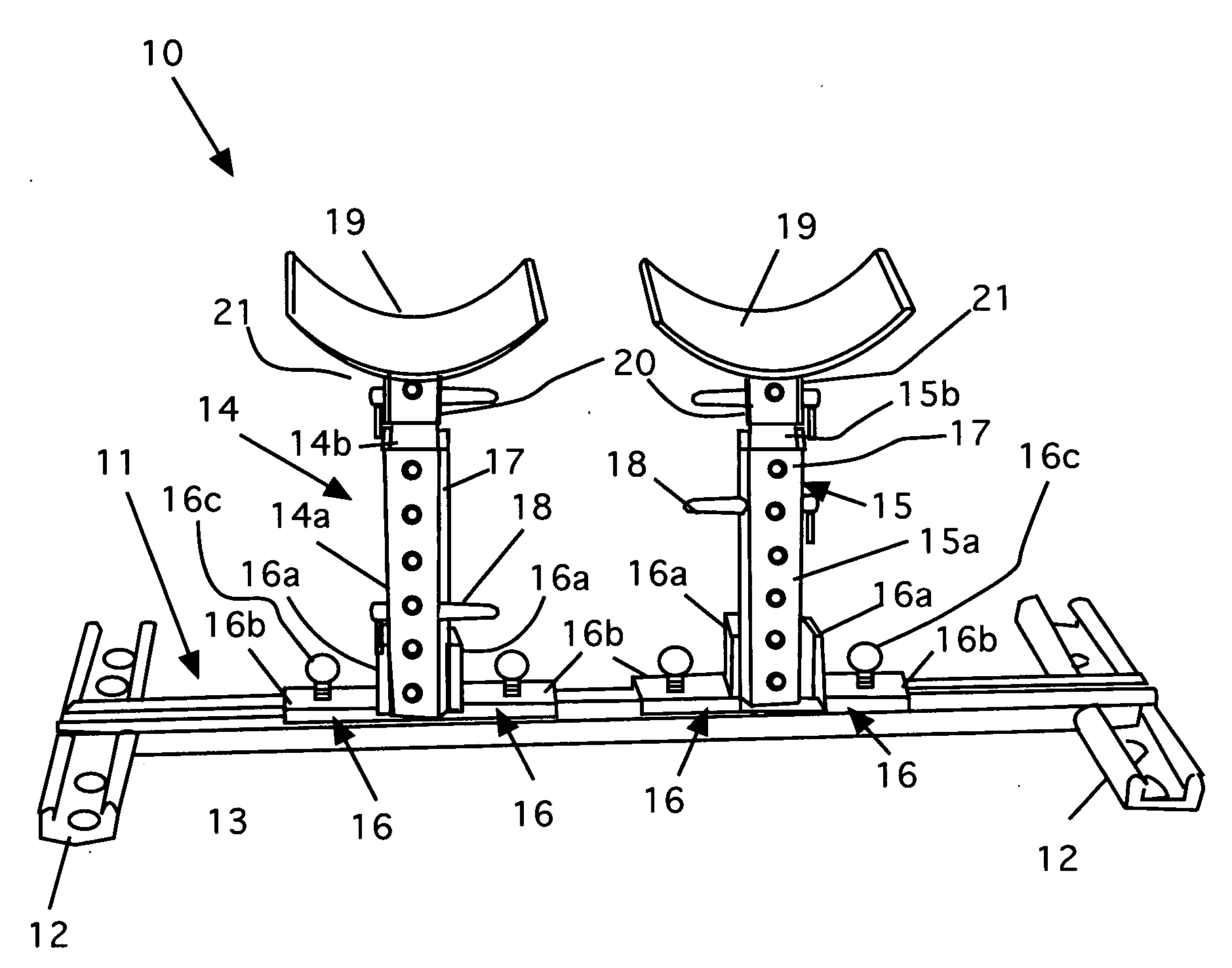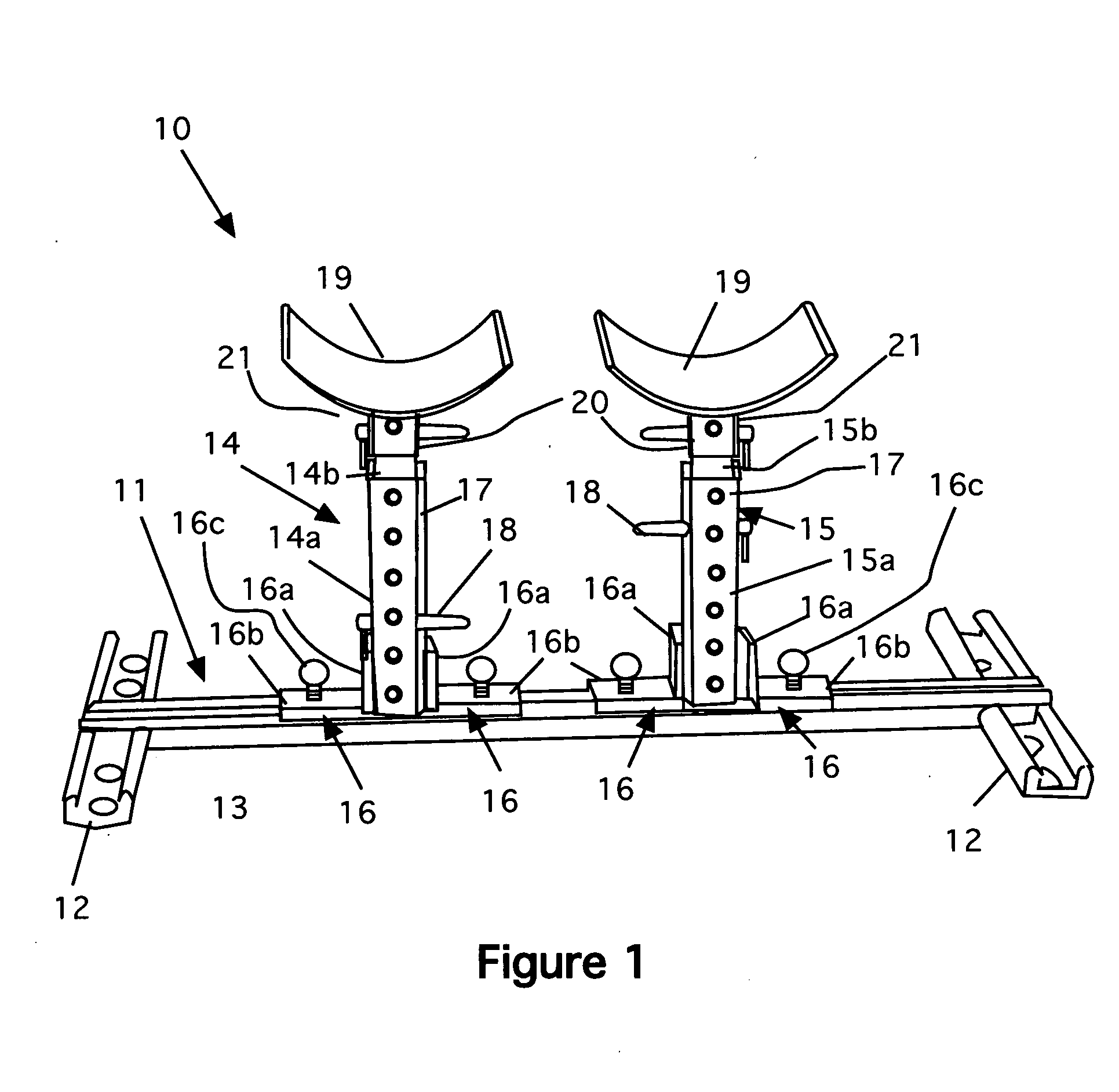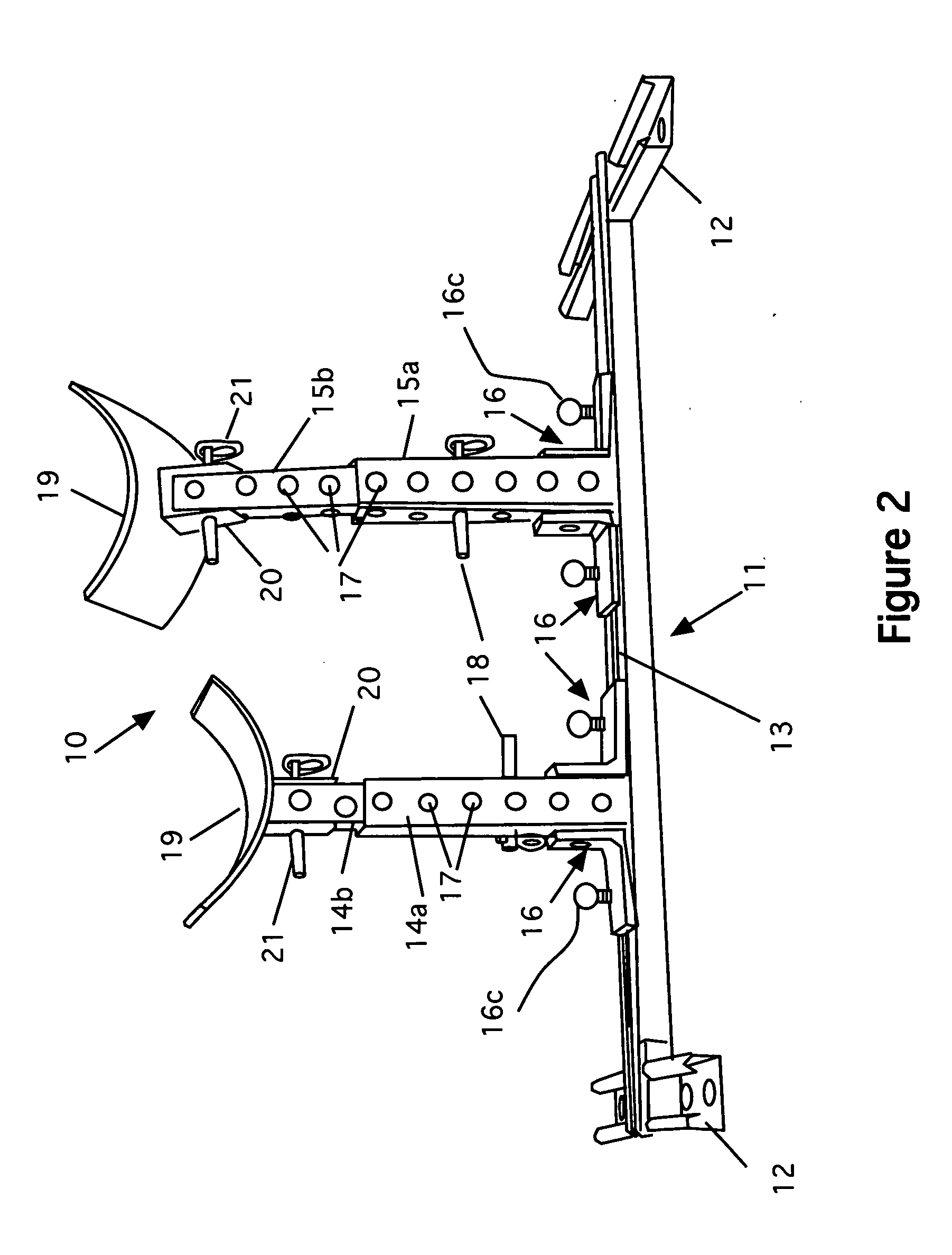Foot, leg, and arm support for exercise
- Summary
- Abstract
- Description
- Claims
- Application Information
AI Technical Summary
Benefits of technology
Problems solved by technology
Method used
Image
Examples
Embodiment Construction
[0024]Referring now to FIG. 1, a front view of the invention 10 is shown. The invention consists of a base 11 that has two horizontal end members 12 and a central connecting track 13. Two vertical post supports 14 and 15 are positioned in the track and are slidably installed in the track so that they can be positioned at any desired location within the track. In fact, one of the posts can be removed if desired so that only one post is in use. The vertical post supports 14 and 15 are secured in the track using locking brackets 16. These brackets have a vertical portion 16a that are secured to the sides of the outer portion of the post supports and a horizontal portion 16b. The horizontal portions 16b have thumb screws 16c that are used to secure the brackets to the track in the desired location. Once tightened, vertical post supports 14 and 15 are firmly help in place.
[0025]Each of the vertical post supports 14 and 15 have and outer portion 14a and 15a and an inner portion 14b and 15...
PUM
 Login to View More
Login to View More Abstract
Description
Claims
Application Information
 Login to View More
Login to View More - R&D
- Intellectual Property
- Life Sciences
- Materials
- Tech Scout
- Unparalleled Data Quality
- Higher Quality Content
- 60% Fewer Hallucinations
Browse by: Latest US Patents, China's latest patents, Technical Efficacy Thesaurus, Application Domain, Technology Topic, Popular Technical Reports.
© 2025 PatSnap. All rights reserved.Legal|Privacy policy|Modern Slavery Act Transparency Statement|Sitemap|About US| Contact US: help@patsnap.com



